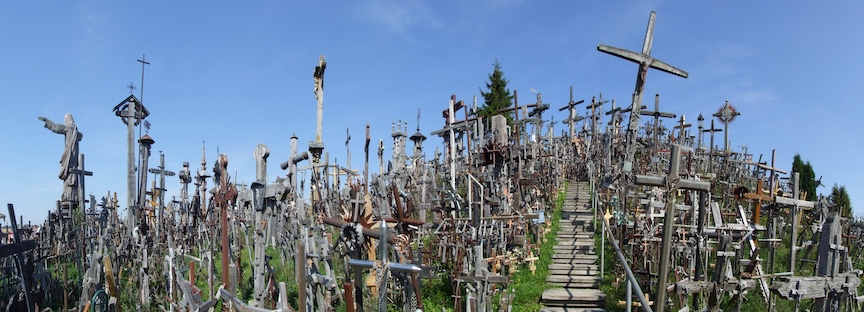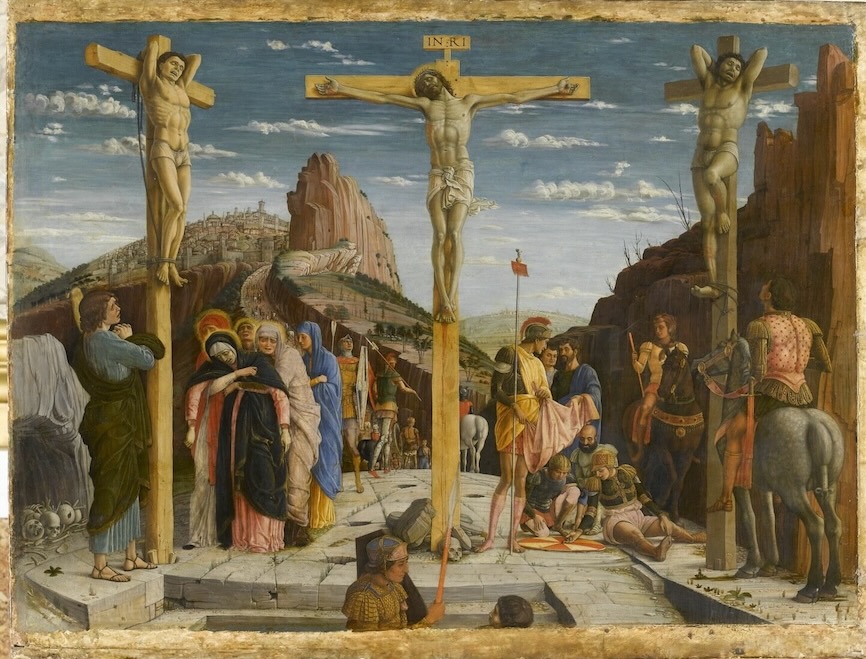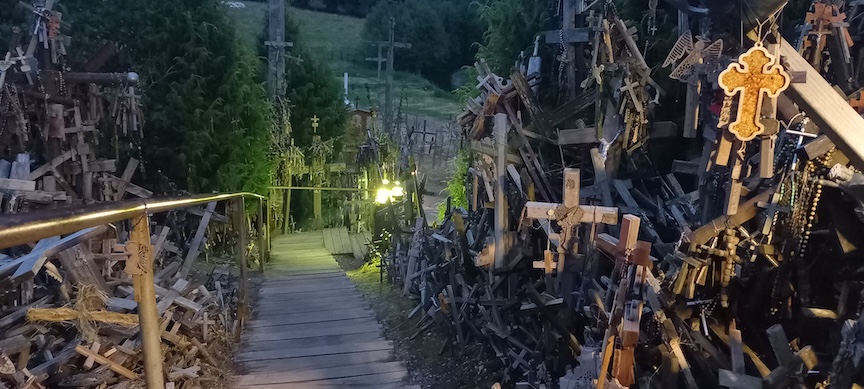Today, the Church gives us an opportunity to reflect on the mystery of the Cross, and she guides our thoughts and sentiments as we call this feast the “Exaltation” or “Triumph” of the Cross. Today, we glory in the Cross; we even rejoice in the Cross. We wear the red vestments of royalty and victory. We sing, “Lift high the Cross, the love of Christ proclaim; let all the world adore His sacred Name.”
This is, at least, a bit “out of sync” with modernity’s approach to suffering and death. Indeed, Father Pablo Straub coined a word to describe the reaction of our contemporaries to the Cross; “cruciphobia” – fear of the Cross! I’m happy to say I learned early to avoid that malady.
I was born with several severe health problems and had to undergo painful treatments.
On one such occasion, the technician on duty was a Sister who said: “Peter, your mother tells me you want to be a priest. A priest is a man of sacrifice – like Jesus the Priest. I know that this is going to hurt a great deal, and I’m very sorry about that. But I want you to do a couple of things. I want you to look very intently on the crucifix on my habit. See how Jesus suffered for you out of His great love. Tell Him you love Him in return, that you want to unite your sufferings to His, and that you wish to offer up your sufferings for your priestly vocation.”
It didn’t eliminate the pain, but it did make it more bearable because it was placed in a bigger context – one that involved divine love, the salvation of the world, and my future life as a priest. Thanks to that nun, whose name I never knew, I have never experienced “cruciphobia” for a single day since.
In August of 1998, I went to Lithuania to assist in the rebuilding of the Church after decades of Communist oppression. Time for sightseeing was extremely limited, and my host asked if I had any “must-sees.” I responded, “The Hill of Crosses.”

For me, that place was – and is – the perfect symbol of the Church in every age. Each cross planted there is a reminder of suffering endured by Christ’s followers; all those crosses together stand forth as testaments to the indomitable human spirit, emboldened and strengthened by the Cross of the Savior. Which is why Pope John Paul II also included “The Hill of Crosses” in his 1993 pastoral visit to Lithuania.
One more story. A world-renowned rabbi and I collaborated for years on many projects, including a book, investigating various theological concerns from our respective traditions.
One of those topics was suffering. (The rabbi had lost a daughter years earlier in a tragic car accident, in which he was the driver. He had never gotten over that tragedy.)
One day we considered the mystery of suffering, particularly of the innocent, we spoke about the less-than-happy solution in the Book of Job. That day happened to be the Feast of the Exaltation of the Cross. I mentioned that in the Cross of Christ, Christians find meaning for all human suffering and death and that such pain can actually be redemptive. The rabbi, with tears welling up in his eyes, sobbed, “How I wish I could believe that!”

All this might lead us to ask: “Just what is this mysterious fascination of Christians with the Cross and with carrying crosses personally?” Most people shrink from suffering, yet the Jesus we meet in the Passion marches boldly and resolutely toward the Cross with all its suffering.
The Epistle to the Hebrews tells us that Jesus learned obedience from what He suffered. The word “obedience” comes from the Latin word for “listening intently.” Jesus listened intently to His Father’s will and plan, and acted accordingly. Indeed, the greatest theology lesson is learned by gazing intently on the crucifix.
A symbol of ignominy throughout the ages is transformed by Jesus Christ. As Julian of Norwich put it, we look on his wounds as honorable scars – tokens of victory and of love.
The Book of Genesis tells us that the cause of Adam’s disobedience was a tree; Jesus, ever-obedient to His Father’s will, takes that tree and makes of it an instrument of salvation. He is history’s point of reference.

Therefore, today the Church invites us to venerate the Cross of Christ. See in that invitation nothing less than the invitation of Jesus to come to Him; He who died for you does not want your death; He wants your life. Naked and wounded, but still loving and still our King, His outstretched arms beckon and remind us, “But I – when I am lifted up – will draw all things to myself.”
That drawing power of the Cross is the ultimate triumph of the Cross. Therefore, every cross borne by any believer in history gains meaning and becomes life-giving when it is brought into a relationship with the Cross from which Jesus reigned as the King of Love and over which He triumphed in His glorious Resurrection. The Hill of Crosses, then, is not a cemetery but the ante-chamber to the life of Heaven.
Our persecuted ancestors knew and believed that, as do the persecuted millions of our co-religionists around the world today (treated so ably by our TCT editor). We comfy and contented Catholics need to learn the same lesson, not fleeing from the crosses which come our way, not blending into a pagan culture to avoid mockery or persecution, not trying to fashion for ourselves a soft, comfortable religion.
No, we must embrace our own particular crosses, seeing the possibility for them to be united to the saving Cross of Our Lord Himself. I would make a special appeal to any who suffer in any way: Do not “waste” your suffering or resent it. Offer it up in union with the sufferings of our Savior, and thus make it redemptive.
The post “Cruciphilia,” not “Cruciphobia” appeared first on The Catholic Thing.




![Trump Reacts to Horrific Footage of Murdered Ukrainian Refugee Iryna Zarutska [WATCH]](https://teamredvictory.com/wp-content/uploads/2025/09/Trump-Reacts-to-Horrific-Footage-of-Murdered-Ukrainian-Refugee-Iryna-350x250.png)






